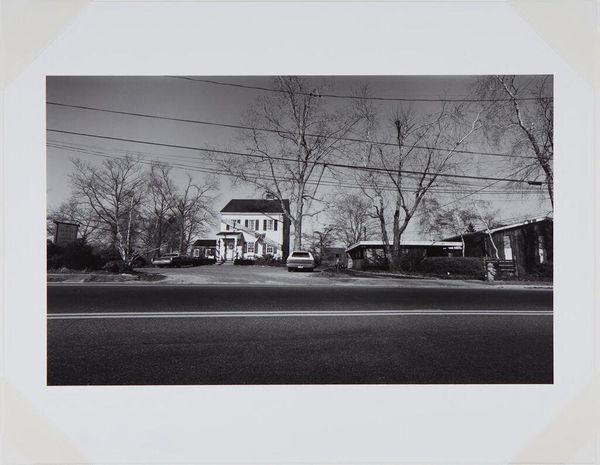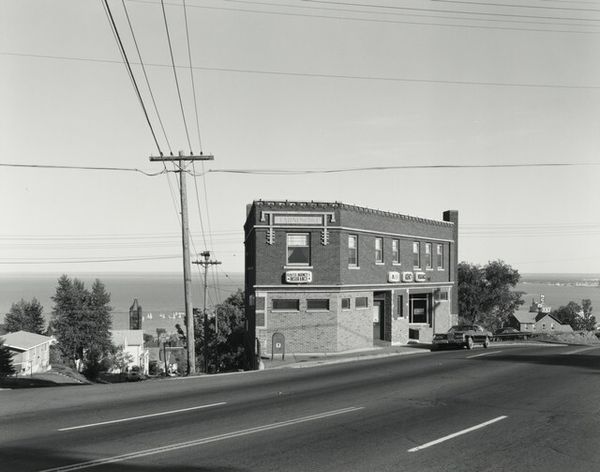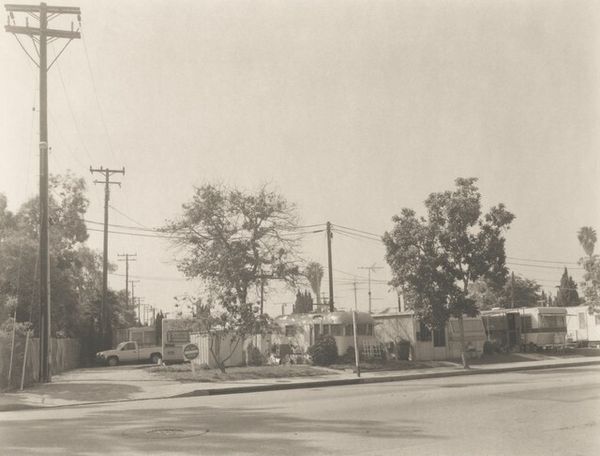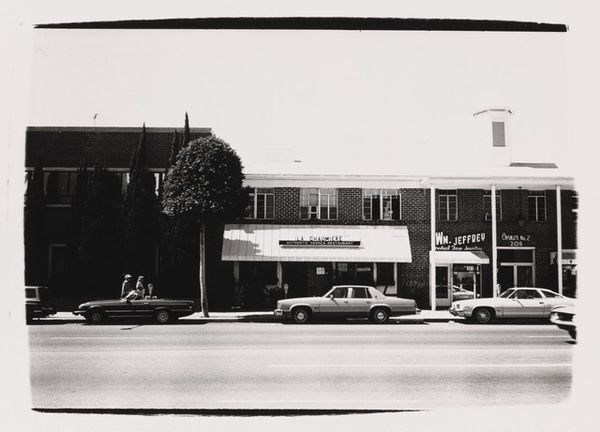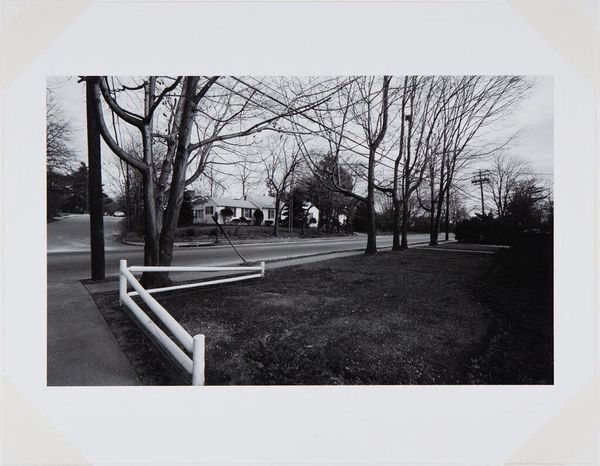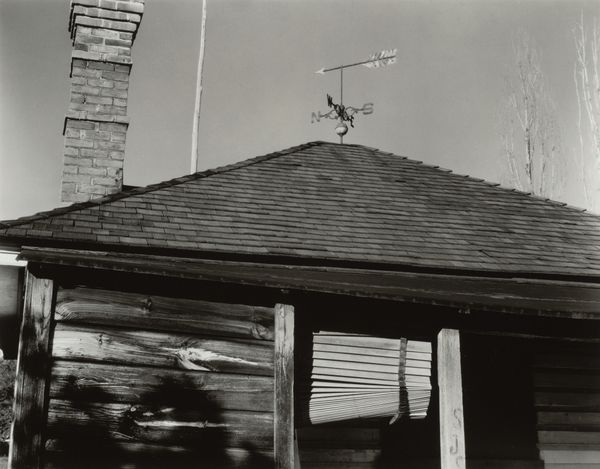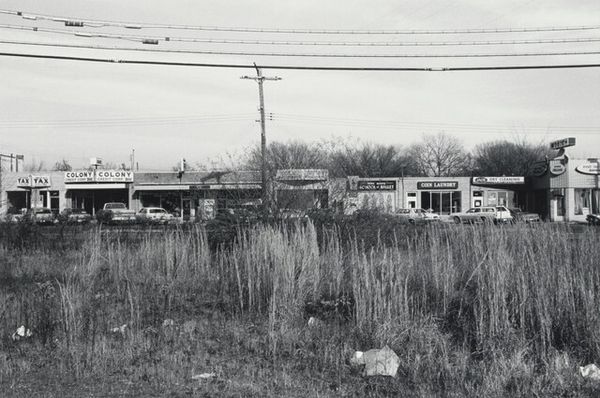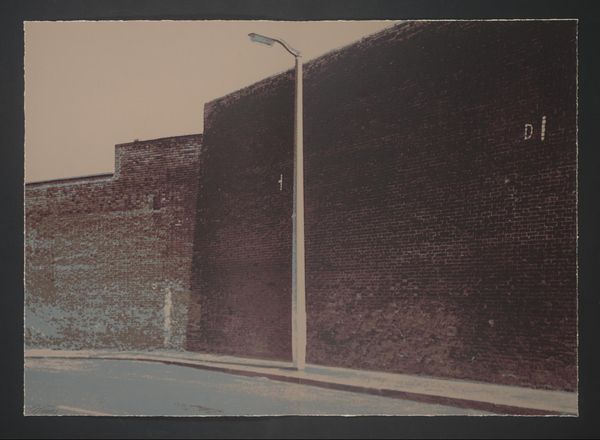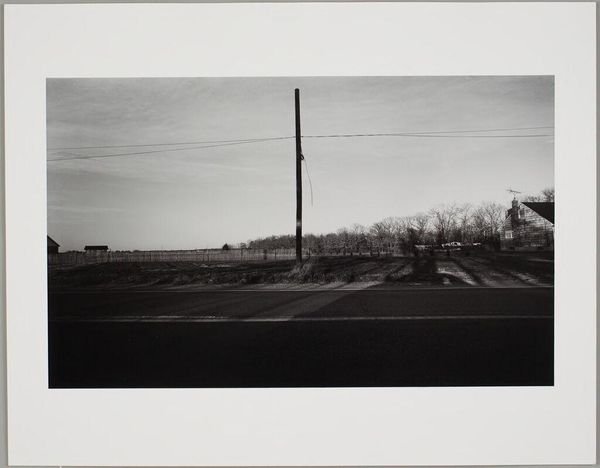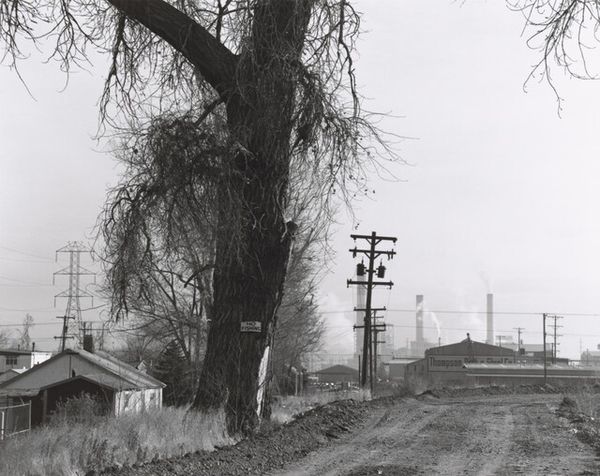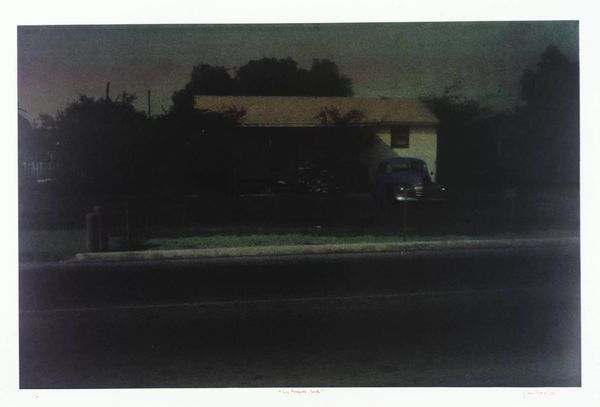
photography, gelatin-silver-print
#
black and white photography
#
landscape
#
black and white format
#
street-photography
#
photography
#
black and white
#
gelatin-silver-print
#
monochrome photography
#
cityscape
#
monochrome
#
modernism
Dimensions: image: 16.1 x 24.1 cm (6 5/16 x 9 1/2 in.) sheet: 20.2 x 25.3 cm (7 15/16 x 9 15/16 in.)
Copyright: National Gallery of Art: CC0 1.0
Curator: Up next we have Lewis Baltz's "Mill Street, Reno", likely taken around 1977 or 1978, captured through gelatin silver print. What strikes you initially about this composition? Editor: A certain desolation, definitely. The stark contrast of the black and white accentuates the emptiness. It feels… intentionally mundane, wouldn't you agree? Curator: Precisely. Baltz often focused on these peripheral landscapes. Note how the composition is rigorously structured. The buildings, the telephone pole—all arranged with geometric precision. It pushes back on the tradition of landscape photography, wouldn’t you say? Editor: It does, and to me this says a lot about the societal shift away from romanticism towards the late 20th-century understanding of development and industry. How was Baltz received critically during this period, within a socio-political climate where the value of landscapes was evolving drastically? Curator: He, and other 'New Topographics' artists, challenged viewers to reconsider their relationship with the built environment. Instead of celebrating nature, Baltz presented spaces shaped and often degraded by human activity. The gelatin silver print renders incredible detail. Look closely at the texture of the buildings, the roughness of the unpaved lot. Editor: It’s almost as if he’s stripping away any idealized vision, offering a raw, unadorned view. The repetition of rectangular shapes—the houses, the cube-like objects, even the window frame—creates a certain rhythm. It could mirror urban planning’s inherent systematization, reducing landscapes into predictable layouts. Curator: I see what you mean. And while aesthetically this creates a somewhat 'flat' plane, devoid of any sharp focal point, it invites closer, almost forensic investigation of each space. The flattening and lack of ornamentation create an environment free from the distraction of traditional landscape romanticism. Editor: Exactly. Baltz encourages us to acknowledge the unacknowledged, challenging ingrained perspectives of American development and its consequences, almost screaming out about societal transformations and public engagement with urban spaces. It is a poignant photograph. Curator: It’s definitely one that stays with you long after viewing.
Comments
No comments
Be the first to comment and join the conversation on the ultimate creative platform.
